The essential guide to board and batten siding
Discover the versatility and appeal of board and batten siding with James Hardie's comprehensive guide. Explore now for tips and inspiration!
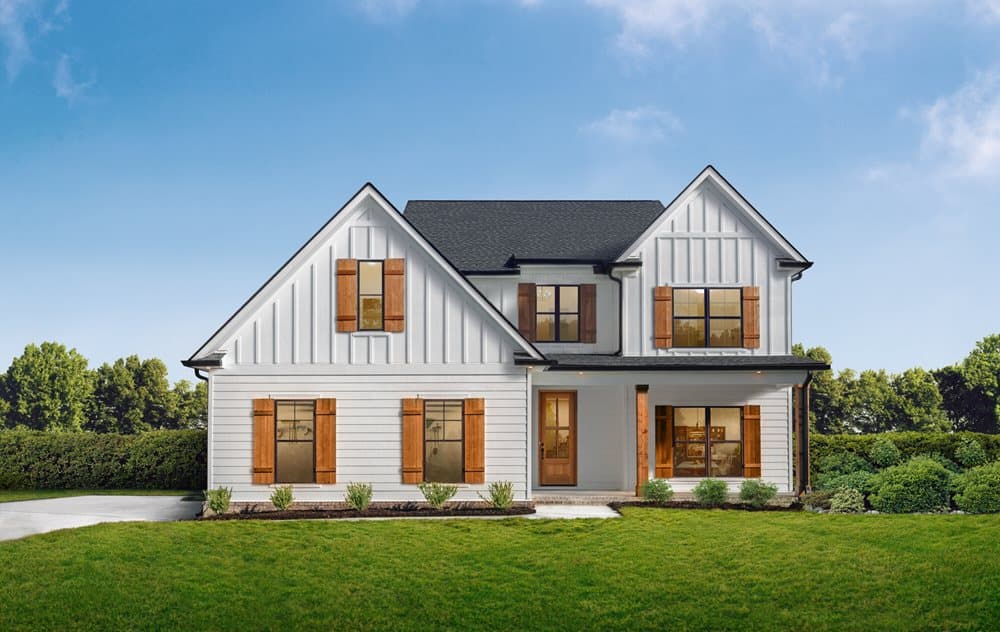
You’re probably already familiar with board and batten siding, even if you weren’t sure what to call it. You may have seen it all over Pinterest boards and Instagram feeds, gracing the pages of design magazines, or even on the exteriors of homes in your own neighborhood.
While it’s a hot trend right now, the style actually dates back nearly 200 years. And that may be part of its appeal to homeowners.
“Whenever you can take something old and reuse it in a modern elevation, it’s going to be appealing in my mind,” said Elizabeth Mathieson, head of design at M House, a Naperville, Illinois-based custom home-building firm.
WHAT IS BOARD AND BATTEN SIDING?
The style evolved in the United States as a more efficient alternative to the log cabin. Barns and houses with board and batten siding were inspired by Nordic European buildings and gained popularity in America sometime around the middle of the 19th century.
Traditionally, board and batten siding starts with wide vertical planks (boards), which are then joined together by thin vertical strips (battens) to cover the seams. Homesteaders and farmers would use sawmills to cut the long boards, and the battens were put in place to make the structure as airtight as possible. Farmers embraced the style when building barns because the technique was inexpensive, assembly was relatively simple, and the result was energy efficient.
Today, wide panels are used as the primary siding and the batten strips are typically decorative, which gives home designers lots of creative license.
BOARD AND BATTEN SIDING BENEFITS
When it comes to siding options, board & batten stands out as a traditional and adaptable solution that has numerous advantages. Discover how the timeless elegance and useful benefits of this traditional method can enhance the exterior of your home.
Aesthetic Appeal: Board & batten siding adds a touch of traditional warmth and rustic character to any home. Its unusual vertical lines produce an eye-catching texture that goes well with farmhouses and modern kinds of architecture.
Durability: Crafted from high-quality materials like fiber cement, board and batten siding boasts exceptional durability. It can withstand the harshest weather conditions, including heavy rain, snow, and UV rays, ensuring your home remains protected and beautiful for years to come.
Design Versatility: Modern board and batten siding allow for creative expression and customization. With options for wider panels and decorative battens, homeowners and designers can play with spacing, colors, and siding profiles to achieve a personalized and unique look.
Low Maintenance: Unlike wood siding that may require more frequent upkeep, board and batten style made with fiber cement needs minimal maintenance. Its resistance to rot, pests, and weather means you can spend less time on maintenance and more time enjoying your home.
Longevity: Board and batten siding's robust construction is very durable, providing lasting beauty and protection to your home for decades. Its ability to resist warping, cracking, and shrinking adds to its longevity.
Potential for Increased Property Value: Investing in a board and batten style look can boost your home's curb appeal and overall value. Potential buyers often appreciate the timeless charm and durability of this siding style choice, potentially making your property more attractive in the real estate market.
BOARD AND BATTEN SIDING COST*
Understanding Board and Batten Siding Costs
When considering a board and batten siding installation, it's crucial to be aware of the associated costs. The overall expenses include both materials and labor, with the material choices playing a significant role in determining the total expenditure.
Materials and Installation Costs*
On average, homeowners report spending $10.50 to $13.90 per square foot for professional installation, including the materials. For a 2,000 square foot house, installing board and batten siding costs between $21,000 and $27,800. It's essential to recognize that recent popularity has driven the cost of board and batten materials up by around 10% each year for several years.
*Source: Remodeling Calculator
Material Options and Their Impact
Materials account for a substantial portion of the overall board and batten siding costs. Depending on your choice of material—such as actual wood, fiber cement, metal, vinyl, or engineered wood—the expenses can range from $0.75 to $10 or more per square foot. Additionally, you'll need to consider additional components like flashing, moisture-resistant barriers, trim pieces, caulk, nails, and potentially paint or stain.
*Source: Angi
Labor and Customizations
In addition to material costs, labor should be considered as well. Some materials, like vinyl, come in specific sheet sizes, which might require cuts or customizations to fit the entire exterior of your home accurately. Any extra work, such as removing or replacing existing siding, will also add to the labor costs.
*All Pricing Information Sources: Forbes, Remodeling Calculator, Angi
HOW TO USE BOARD AND BATTEN SIDING
Board and batten siding allows for a personalized aesthetic by playing with batten spacing and incorporating diverse materials. Whether you're a seasoned DIY enthusiast or a homeowner looking to embark on a new project, understanding how to install board and batten siding and how to use it is essential for achieving the desired look.
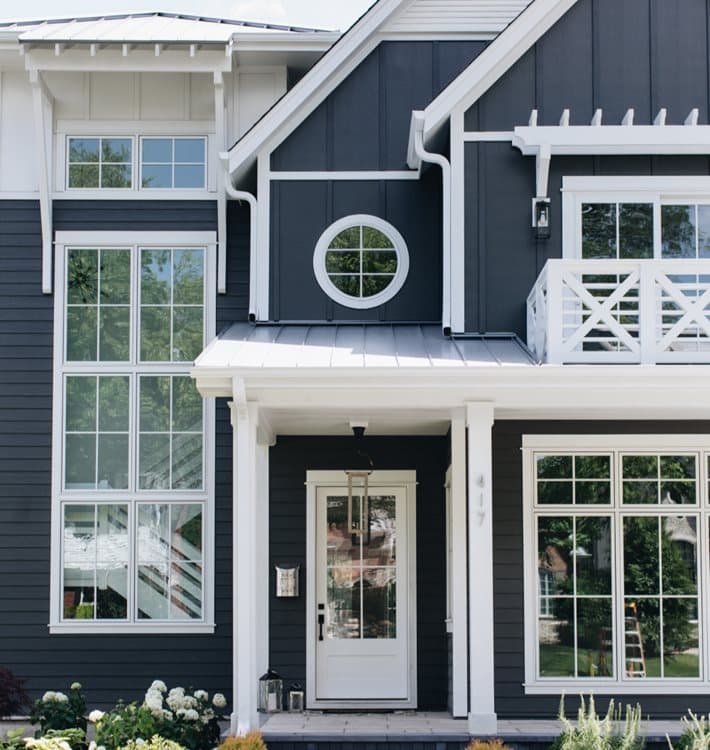
The style provides the versatility to create an ultra-personalized aesthetic. Mathieson said designers can play with the batten spacing, and incorporate other materials or siding profiles, to create both modern and more traditional looks.
For example, if you’re thinking about designing a modern farmhouse that uses board and batten siding for the entire façade, Mathieson recommends wider spacing to achieve an elegant, modern aesthetic that doesn’t look too busy.
Mathieson has also gone the opposite direction and used very tight batten spacing in a dark color to create a very modern, textured wall.
While the look can certainly be used as the main focus of an elevation, Mathieson said it can also be successfully used for gable detail.
“If you do tighter spacing right up in the peak, it almost gives the look and feel of an applied grate,” Mathieson said.
To avoid an aesthetic that’s too specific to the farmhouse trend, Mathieson prefers to use the look in conjunction with another siding profile, such as Hardie® Plank lap siding. The result, she said, is a more modern, and typically more appealing, design.
BOARD AND BATTEN SIDING IDEAS
Get inspired by creative board and batten siding ideas and colors that play with spacing, siding profiles, and complementary materials, resulting in stunning exteriors that reflect the perfect blend of tradition and modernity. Board and batten siding offers a plethora of design possibilities that can elevate the curb appeal of any home.
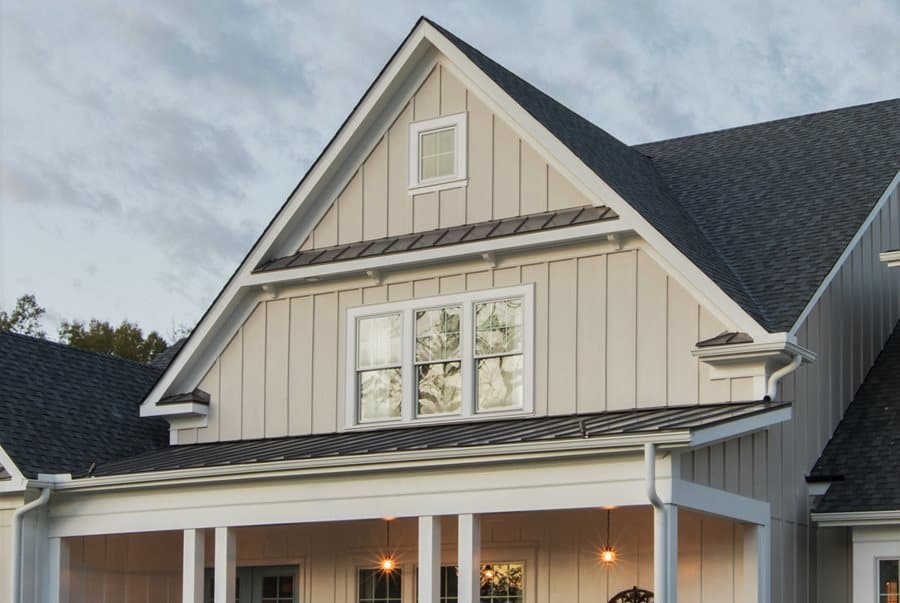
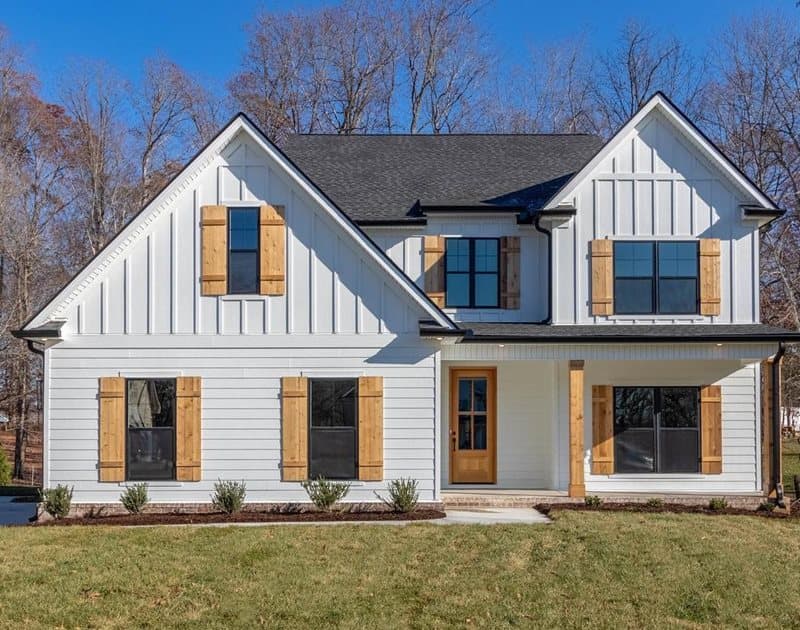
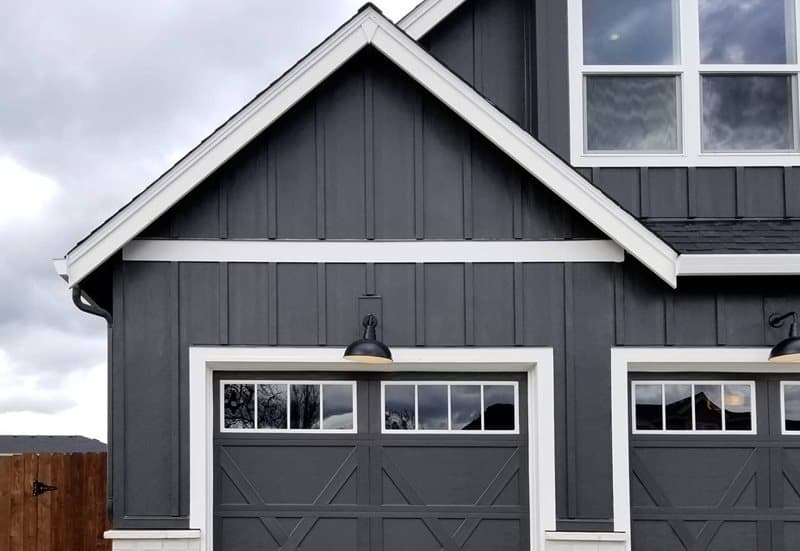
HOW TO GET THE BOARD AND BATTEN LOOK WITH HARDIE® PRODUCTS
This siding style was traditionally made of wood. But wood siding is vulnerable to moisture damage, invites insects like termites, and requires more ongoing maintenance.
Modern building products, like fiber cement siding, make it possible to achieve an identical aesthetic with more durable materials for a lower-maintenance siding solution. Hardie® fiber cement siding is engineered to stand up beautifully, whatever the elements, and comes with the option for an authentic woodgrain finish.
To achieve the look, you’ll use Hardie® Panel vertical siding as your base material. You’ll be able to choose from a variety of colors and textures to achieve a precise aesthetic that reflects your personal taste. You’ll complete the look with Hardie® Trim Boards batten strips, which are decorative 3/4-inch thick, strips.
The final design is limited only by your imagination. Board and batten siding provides unique exteriors to houses across the country. It’s a classic design style that can help your home keep its curb appeal for years to come.
All Sources:
*Board and Batten Siding Costs References:
https://www.forbes.com/home-improvement/siding/board-and-batten-siding-cost/
https://www.remodelingcalculator.org/board-and-batten-siding/
https://www.angi.com/articles/how-much-are-board-and-batten-siding-prices.htm
*Materials and Installation Costs
https://www.angi.com/articles/how-much-are-board-and-batten-siding-prices.htm